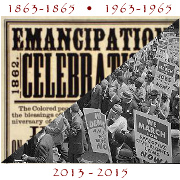Reflections by Sumiko R. Mekaru and James DeW. Perry
An ever-increasing number of Americans identify as being of more than one race. Between 1990 and 2000, the multiracial population of the U.S. grew at an annual rate of 6.9%, exceeding the growth of every other racial group. Following dramatic increases in the number of interracial couples in the U.S. in recent decades, the 2000 Census recorded 7 million multiracial Americans, and projections suggest that 20% or more of the population will identify as multiracial by the year 2050.
The decision to identify as multiracial, however, is a personal one, and these statistics may significantly underestimate the numbers. One survey in California found that depending on the question asked, 26.3% of respondents will self-identify as being of more than one race, despite only 4.7% of Californians choosing that identification in the 2000 Census. Racial and ethnic groups also vary widely in their contributions to the multiracial population, as well as in the acceptance of multiracial identification. While over 30% of those who claim Japanese heritage now identify themselves as multiracial, only about 5% of blacks self-identify as being of more than one race (despite the high proportion of blacks with non-black ancestors).
The popularity of Tiger Woods and, more recently, Barack Obama have increased awareness and acceptance of those who identify as multiracial, as having rapidly changing cultural norms among many younger Americans. Nevertheless, bi- and multi-racial individuals continue to find themselves shoe-horned into categories that do not fit. Common experiences can include having your ethnicity mistakenly identified; being told you’re “exotic,” a “mistake,” or “acting white”; having your racial identity judged based on your choice of friends; and enduring the ever-popular question, “What are you?”
If a facilitator decides to use racially defined caucus groups, sensitivity must be exercised. Multiracial people self-identify in many different ways, and a single individual may self-identify differently in different situations. Even siblings will often self-identify differently. Accordingly, facilitators should be prepared to acknowledge that the caucus structure may be forcing people to yet again “choose one” and deny their fundamental identity. Facilitators should also, at a minimum, encourage multiracial people to select which of the caucus groups to join, or to participate in multiple groups. Be aware that multiracial individuals may expect a workshop on race to provide a safe space to everyone, and that forcing them to censor part of their identity may result in feelings of anger, sadness, or betrayal as they are drawn and halved by the experience.


